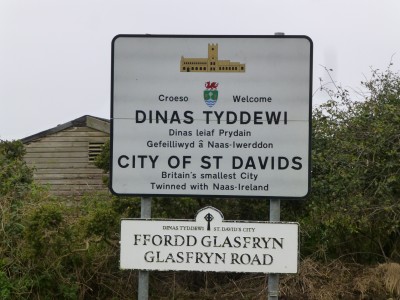
I’ll save you the trouble of looking it up. The following is from the Wikipedia page on St. David’s where there is much more info for those who want it. There is also a page hosted by the Cathedral on Google
“The monastic community was founded by Saint David, Abbot of Menevia, who died in 589. Between 645 and 1097, the community was attacked many times by raiders, including the Vikings, however it was of such note as both a religious and intellectual centre that King Alfred summoned help from the monastic community at St Davids in rebuilding the intellectual life of the Kingdom of Wessex. Many of the bishops were murdered by raiders and marauders, including Bishop Moregenau in 999, and Bishop Abraham in 1080. The stone, which marked his grave, known as the “Abraham Stone”, is intricately carved with early Celtic symbols and now on permanent display within the Cathedral Exhibition at Porth-y-Tŵr.
In 1081, William the Conqueror visited St Davids to pray, and thus recognised it as a holy and respected place. In 1089, the shrine of David was vandalised, and stripped of its precious metals. In 1090, the Welsh scholar Rhigyfarch wrote his Latin “Life of David”, highlighting David’s sanctity, thus beginning the almost cult-like status he achieved.
In 1115, with the area under Norman control, King Henry I of England appointed Bishop Bernard as Bishop of St Davids. He began to improve life within the community, and commenced construction of a new Cathedral. In 1123, Pope Calixtus II granted Bishop Bernard’s request to bestow a Papal privilege upon St Davids, making it a centre of pilgrimage for the Western world, the Pope decreeing “Two pilgrimages to St Davids is equal to one to Rome, and three pilgrimages to one to Jerusalem”[1] The new Cathedral was quickly constructed. Bishop Bernard consecrated the new Cathedral in 1131. Henry II of England’s visit in 1171 saw the following of David increase – and the need for a larger Cathedral.”
But I had a tour guide. Sarah Geach, as a Reverend Canon, has spent many hours at the Cathedral and she and Alan took me through it.
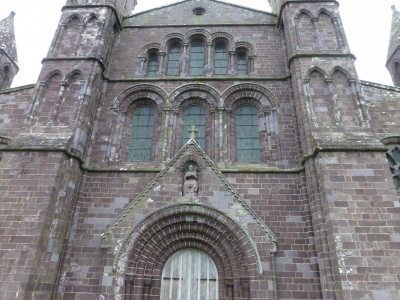
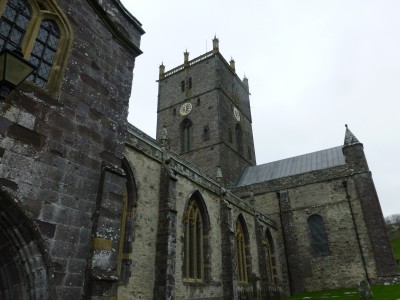
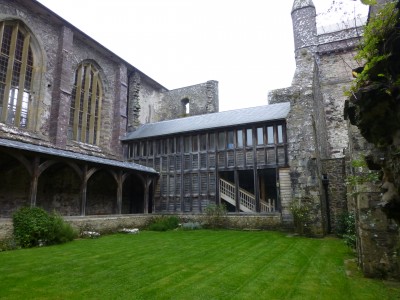
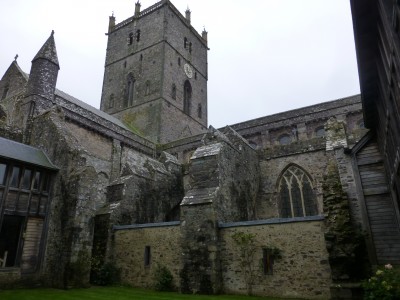
Due, I believe to weakness of the land which was sloped, and the weight of the roof and bells, the cathedral walls lean out. Bells were relocated to their own building and the stone roof was replaced with wood (Sarah, please use comment area to correct if needed, thanks) and so these ‘Yuuuge’ as Trump might say, flying buttresses were needed to prevent the building’s collapse.
The bishop’s house is no more than ruins today but you can see by the size it must have been some digs back in the day.
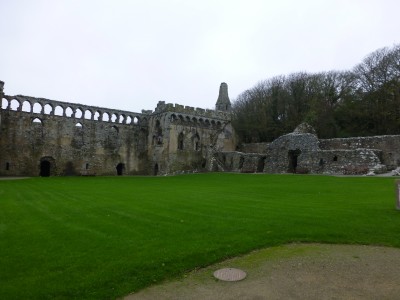
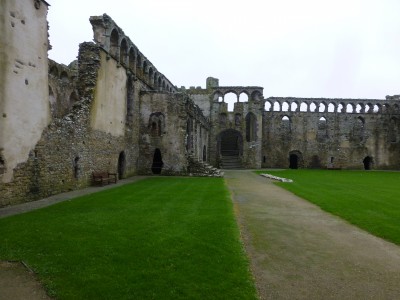
{ 0 comments… add one now }